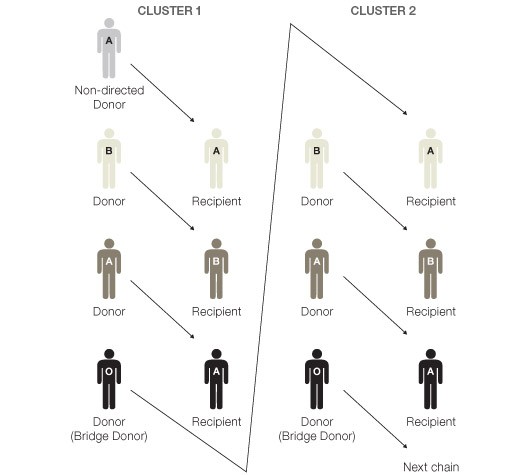kidney Donation chain
Donor chains work similarly to paired kidney donations, in that they take advantage of healthy and willing—but incompatible—donors. The chain is initiated by what is called a non-directed donor. A non-directed donor is someone who offers to donate a kidney without a designated recipient, but with the explicit wish to donate to someone in need of a transplant.
Creating cluster
Kidneys from non-directed donors are used to initiate a cluster of kidney transplants for incompatible donor/recipient pairs. For each of these clusters – which could potentially include numerous incompatible pairs – there is one potential donor within an incompatible pair who has not donated a kidney but whose partner has received one. This person is called the "bridge donor," and he or she can be used to initiate yet another cluster of transplants among incompatible donor/recipient pairs.
The ideal "bridging donor" has blood type O because people with this blood type can donate to anyone else. Therefore, O donors increase the number of potential matches in a cluster.
As with paired-exchanges, we use computer algorithms to maximize the efficiency of these chains.
